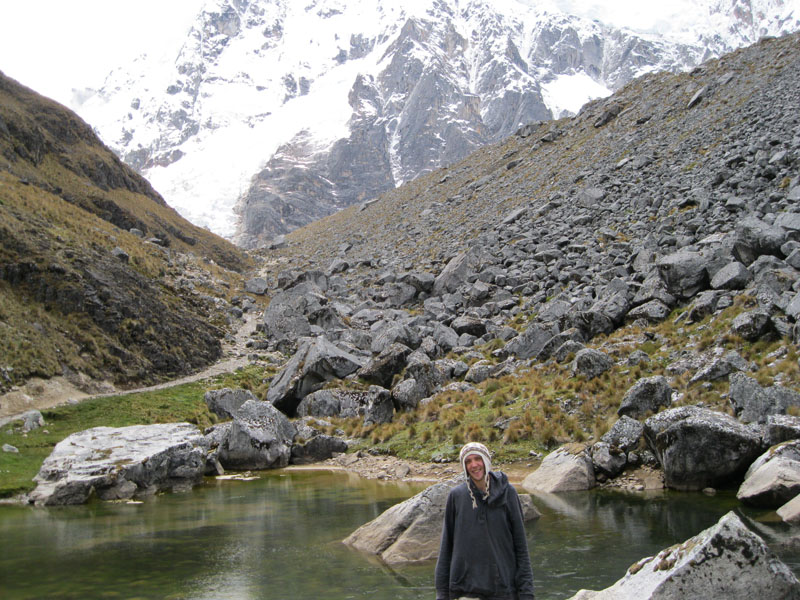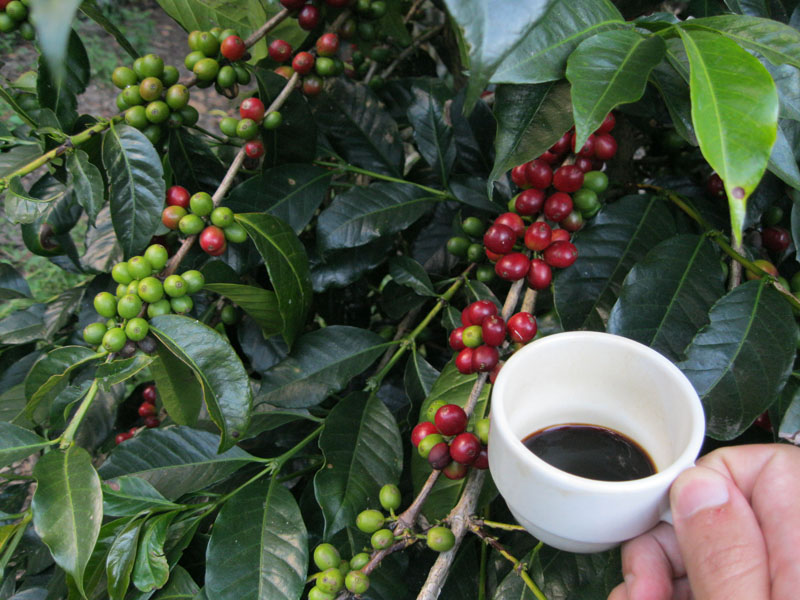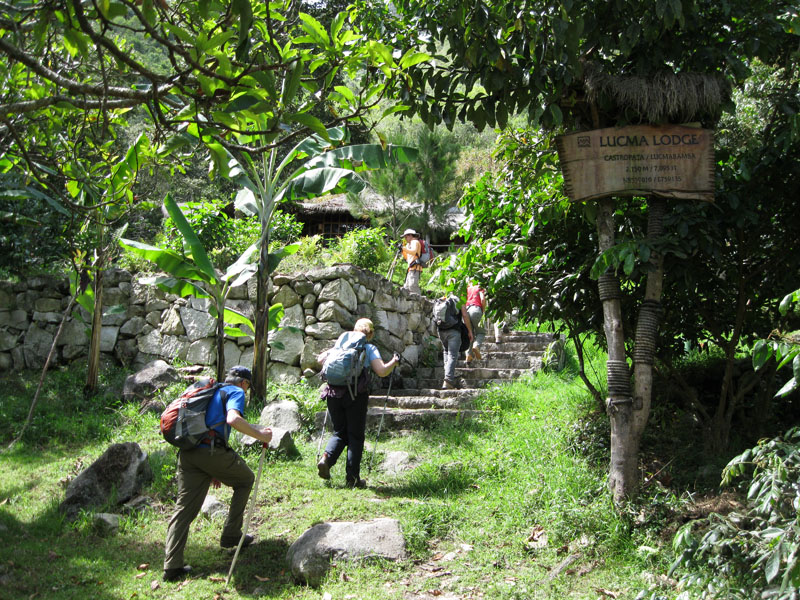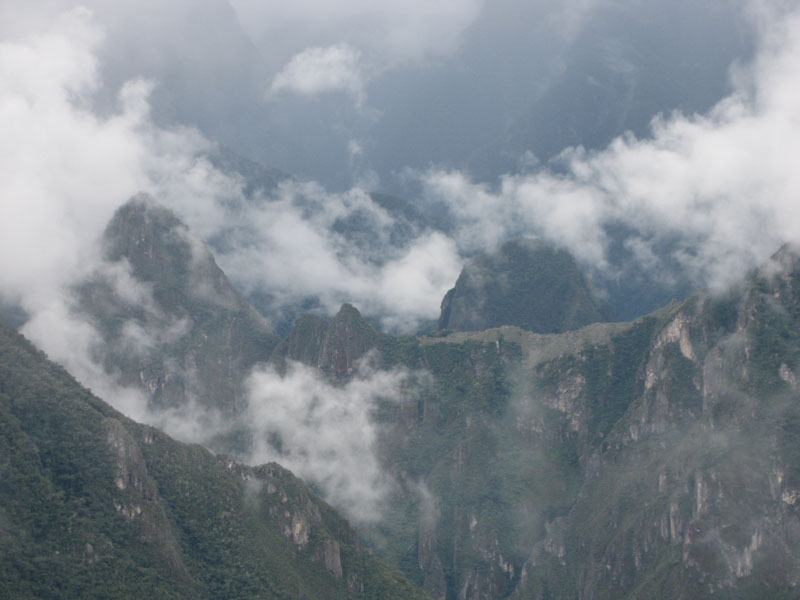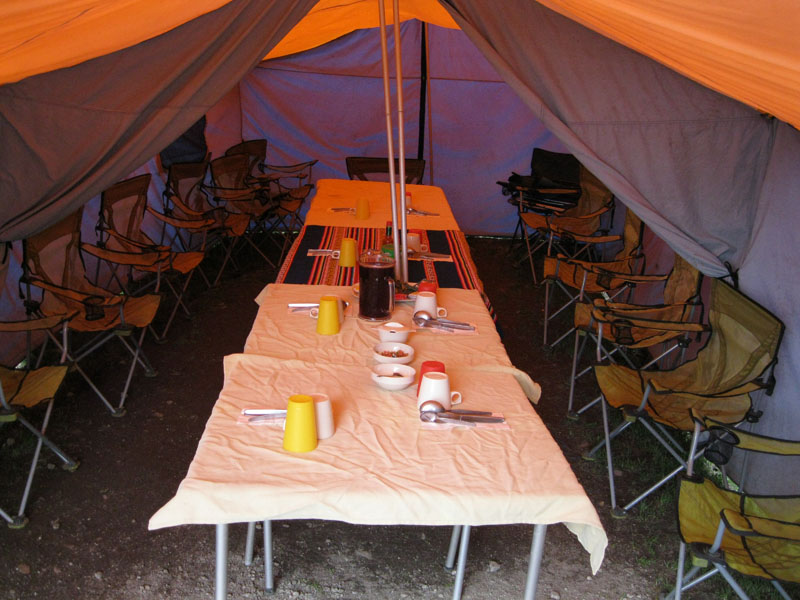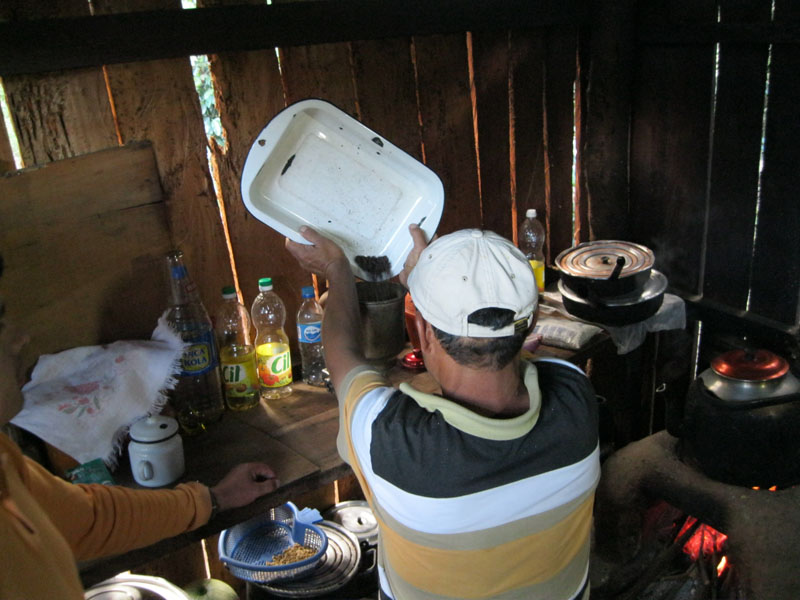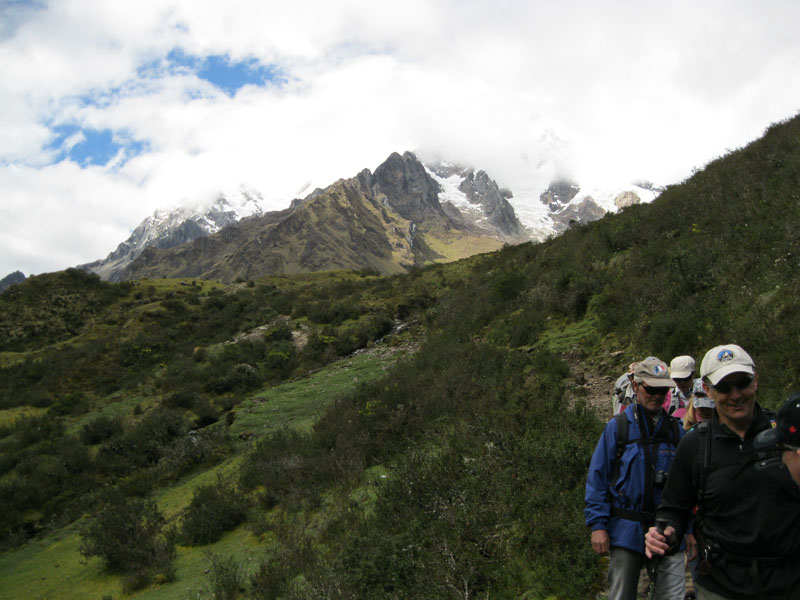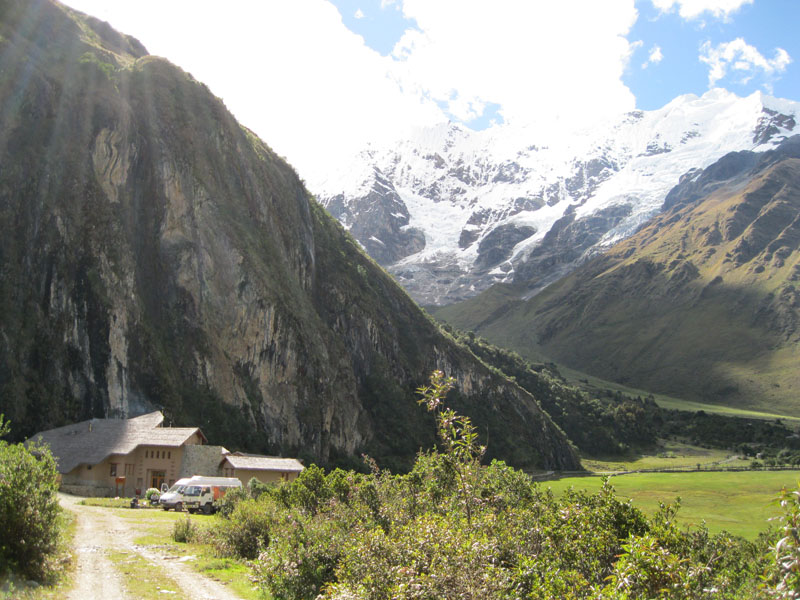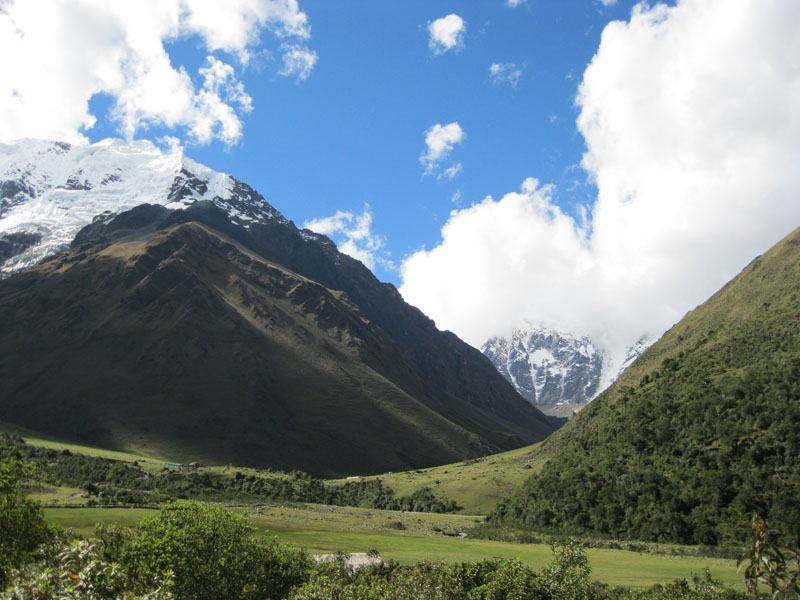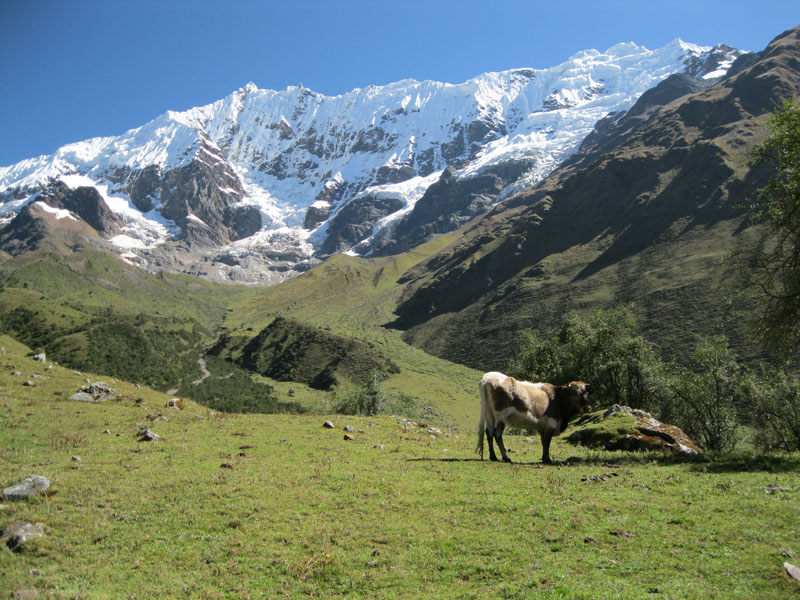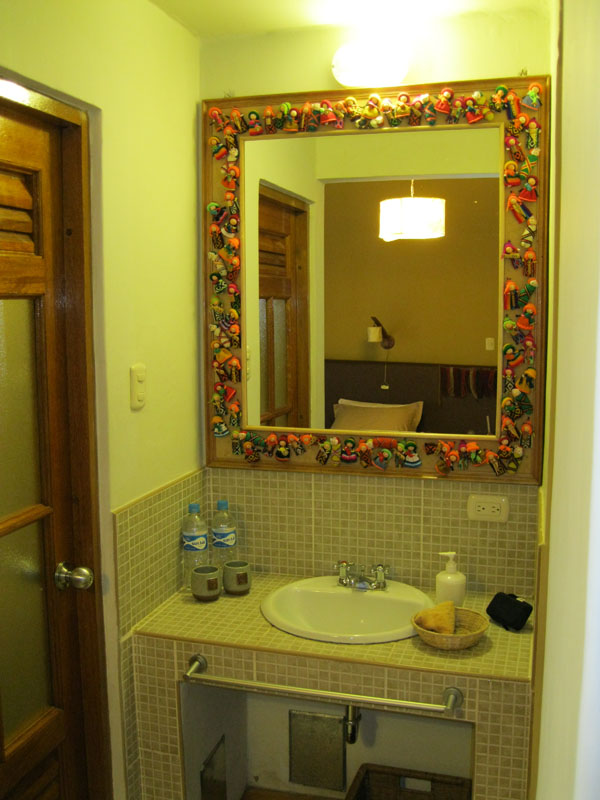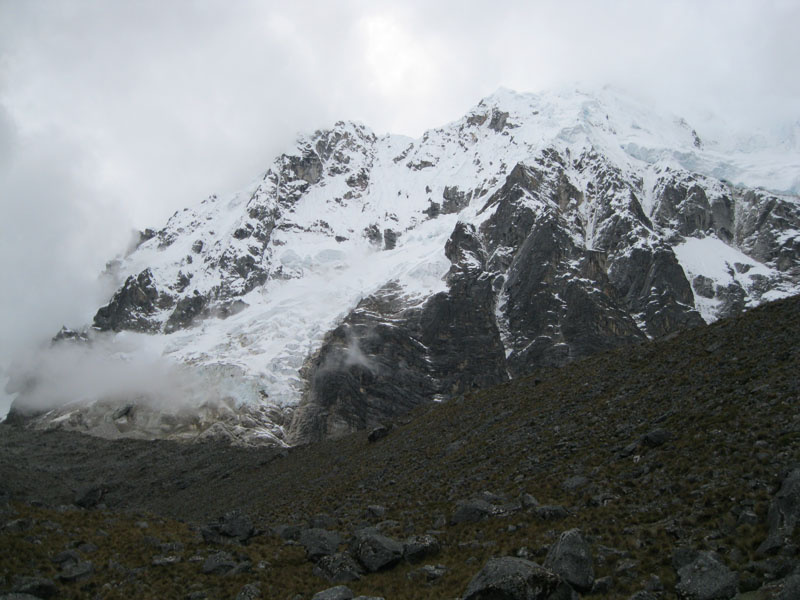While in the Cusco region, I recently took the opportunity to hike the Lodge-to-Lodge Salkantay trek, a fantastic 6 day trek to Machu Picchu that sees partakers staying each night at comfortable lodges in between walking along a stunning route that passes beneath the snow covered peak of Salkantay amongst other marvels. The Salkantay trek is one of the most popular alternative treks to Machu Picchu. Here’s my review of the experience.
Lodge-to-Lodge Salkantay Trek
View all of our Peru Luxury Trekking options
Day 1: Cusco to Apu Salkantay
We started out from Cusco in the morning and headed toward the town of Mollepata. Along the route we took the opportunity to have a look at the protagonist of this trek; Apu Salkantay. We also stopped for a look at the Inca ruins of Tarawasi, an interesting complex situated in a fertile valley. It is believed that this may have been a trading post between the highlands of Cusco and lower lands towards the coast. The usual arrangement of excellent stone masonry was aplenty.
After a quick lunch at Mollepata, we made one further road journey before beginning the trek. And todays trek was a good warm up! A nice, level path … not too steep … to acclimatise to walking at high altitude. All along the way we got closer and closer to the Humantay Glacier, beneath which the first lodge is located. The glacier … which has purportedly significantly receded in the last few decades … provides a fantastic view for the 3-4 hours of trekking today. As we approached the first lodge, suddenly the tremendous peak of Apu Salkantay also made its appearance. It was a little clouded today but still incredible in the sparkling bright sunlight.
Overnight at the Salkantay Base Lodge (3,850m / 12,700ft)
Arriving at the lodge and expectations were exceeded. This is a spectacular achievement, a luxury lodge in the midst of the remote Andes. Our guide Miguel told us of the great effort that had been made to construct the four lodges, and at this altitude, with the sheer attention to detail and meticulous planning that must have been poured into this project, this can be understood.
The bedrooms are very comfortable with hot water and ample heating. The lodge is expansive, with winding corridors leading between pockets of comfy seating to chat with friends and fellow travellers including a DVD screening room. There is a hot drinks station, a well stocked bar, and a shop for last minute essentials for the rest of the trek, as well as tasteful souvenirs.
The location is a treat in itself: Humantay and Salkantay are both visible from all of the bedrooms, and the restaurant and lobby provide commanding views of both. And the restaurant has excellent food, there is a permanent staff at this lodge, although the chef will travel with us to each of the lodges as he knows the preferences of each guest. Tonight we hacream of pumpkin soup followed by trout and mashed potatoes and rounded off with crema de aguaymanto…
All in all an excellent start, hope I can connect again tomorrow for further musings…
Read the alternative Salkantay Camping Trek itinerary
Day 2: Hike to Glistening Glacial Lake Humantay
Today, after waking up to the orange rays of the sunrise gleaming off the snow capped face of Salkantay, I enjoyed an excellent buffet breakfast, which included a selection of cold meats and cheeses, fresh yoghurt, cereals, orange juice, papaya juice, scrambled eggs with bacon and cheese.
After said breakfast, we began the days hiking. Rather than the usual Salkantay route, this entailed getting even closer to Humantay glacier to reach to a glacial lake before returning to spend a second night at the Salkantay Adventure Lodge. Our guide Miguel explained to us that this was a good practice hike in preparation for tomorrow, which sees us cross a high pass of 15,000 feet (4,600m). Likewise, should anybody still be feeling the effects of high altitude, they could opt for resting this day and building energy for tomorrows trek, as was the case with one person on our group.
We started out from the lodge towards the glacier, a two hour uphill hike. Along the way Miguel showed us some native plants and explained the different uses that these have in local communities, everything from mending ailments to seasoning meats. We also had the delight of spotting an Andean condor high in the sky above, a little too far for photos unfortunately.
The walk took us through rural pastures populated by cows curious about our presence. Miguel told us that at these high altitudes potatoes can still be grown, and that locals from down the valley sojourn here for three weeks a year at harvest time. As we got higher we reached a flat area before one final steep climb to reach the lake. And it was spectacular; the water was glistening blue from the Andean sky with the white reflection of the looming glacier above. Very few trekkers ever get to see this, most race off on the standard route without giving thought to this spectacle. For those who like to submerge themselves in bitterly freezing cold water at 14,000 feet above sea level, this is also an opportunity – that I took! No word that I can use on the Aracari blog can describe this feeling…
After marvelling over the lake for half an hour so, embellished by the odd avalanche, we returned to the lodge for a delicious lunch: quinoa with olives, pecans and cheese for starters, the Peruvian classic Lomo Saltado for entree and fruit for afterwards, everything prepared and presented by the local staff to the highest quality. Miguel told us that all of the staff here hail from the local area.
The rest of the afternoon was at our leisure, and later on I took the chance to dip into the rather smart looking Jacuzzi, a polar opposite to my earlier swim. In the evening, we were treated to a history lesson from Miguel, as well as a Pisco Sour demonstration. After lights out (the generator is turned off at 11) I am going to look at the stars, which look brilliant up here! Then I’d better sleep before tomorrow’s mission.
Day 3: Crossing the highest point to Salkantay
The big day! We started walking early in the morning, about 7am, and began climbing towards Salkantay. As we crossed through the grassy fields and past winding rivers, the porters passed us with our luggage, before we climbed higher, the lodge slowly turning to the size of a pin head in the valley far below. There were few other people about; most of the other trekkers had began far earlier in the morning as this day on the camping route is usually much longer.
As we got higher, the mountains began to open up around us, with high peaks in every direction. The temperature started to drop considerably and the gloves and hat came out. We stopped for a snack beside a high lake, no swimming this time. After a break we made the final push to the pass. Salkantay by this point was looming massive beside us. The peak was covered with clouds sweeping past from the other side of the pass, but every now and again they would clear to give us a view of the pristine snow and ice above us.
And just after midday we finally reached the highest pass on the trek, 4,600 metres above sea level! There were cairns everywhere, a sign of the many people who have embarked on the Salkantay route, and I couldn’t resist building my own one. We rested for a while at the top with the wind rushing past admiring the constantly altering views of Salkantay, before beginning the descent.
Within a few minutes of starting the journey downhill we realised that the landscape was changing dramatically. On this side of the pass green valleys appeared far below us, with our immediate surroundings marked by scattered granite which reminded me very much of the mountains at home on the Isle of Arran in Scotland.
After an hour of walking we reached the lunch tent. We stopped to enjoy a hot meal, corn soup followed by pasta with mushroom and tomato sauce and a dessert of pear in wine, a delicacy in these environs. We were then introduced to the chef who would accompany us for the whole trip. We continued to walk downhill after lunch, with glaciers looming above us on both sides of the valley which was becoming increasingly green ahead of us.
Overnight at Huayra Lodge (3,800m/12,600 ft)
We shortly arrived at the second lodge, Huayra, which was beautifully perched right above the point where the valley becomes densely vegetated with trees and plants. This lodge was much smaller than the base lodge, but this was indeed something of an asset. The whole place felt much cosier and home like. This was partly helped by the decorations as well, bright and authentic Andean textiles in warm colours . Although the lodge had a definite similar uniformity in its style and feel to Soraypampa – brightly coloured paint (this time orange instead of red), sleek furnishings – certain aspects of the decor and materials used made this feel more like a mountain lodge in the traditional sense, particularly the large slabs of granite used to build the walls and the cosily arranged living room.
By this point the clouds had persisted and so we did not see the view of Salkantay that can usually be enjoyed from Huayra enjoys, but the presence of the mountains and views to the valley below remained impressive. In the evening we had a delicious dinner – leek soup followed by steak with potato gratin and apple pie for dessert – before Miguel gave us an interesting talk on Qoyllur Rit’i festival and the convergence between native religion and Catholicism.
Day 4: Descending into the Cloud Forest
After an early start and the usual ample buffet breakfast we continued to descend into more tropical climbs for what would be a much shorter day of walking, only about 3 to 4 hours. The clouds had cleared and we were treated to spectacular views of the very ground where we had been traversing the previous day, and towards Salkantay. We were rather sad to leave the second lodge so quickly, it had been a welcome refuge after the difficult trekking yesterday and we could have easily spent the day relaxing there. Nevertheless, we ventured onwards to the next stage of the trek, continuing downwards into the green Salkantay valley.
Along the way more and more aspects of the more humid environment showed face: flowers, orchids, bamboo, hummingbirds and thick vegetation were all accompanied by the sound of birds, and, as Miguel informed us, tiny black and brown frogs that inhabit the region. There were also a great deal more mosquitos calling for a splash of repellent. We passed more and more settlements on the way down, tiny rural villages populated by no more than scurrying chickens and dogs at this time of day.
The zone we were passing through is in fact the very point where the Andes mountains meet the Amazon rainforest. In these high climbs of the jungle there is nothing of the sweltering heat and humidity of the deep jungle, but it is the beginning of trees, thick vegetation and a great wealth of biodiversity and wildlife that continues right the way to Brazil’s atlantic coast. It was a dramatic change, from the harsh, barren landscapes that we had passed the day previously, to the sight of the treetops, and the croaking, buzzing and screeching of busy animals all around. To walk into the start of the Amazon was a real privilege, one that I’ll never forget.
Overnight at Colpa Lodge (2,800m/9,200 ft)
We continued downwards, closer and closer to the Salkantay river before eventually crossing it, and making one final steep 10 minute climb to the third lodge, Colpa. This was perched upon a grassy knoll with a view over a nearby village – at this point full of campers from both Salkantay and Choquequirao, as well as views down to the convergence between the Salkantay, Chalan and Totora Rivers. We sat in the wooden sunchairs outside admiring this scene, before heading indoors for a hot shower.
Colpa lodge was again slightly different in style to the previous two lodges. As well as having a much longer structure, it, too, had its own distinct colour scheme, this time of green, as well as decorations more akin to Andean folklore and celebration of festivals. The bedroom was again very comfortable, with a clean bathroom, comfortable mattresses and soft linens.
Shortly afterwards, we were treated to an Andean barbecue demonstration, or “Pachamanca”. This technique, common since pre-Inca times, consists of burying animals such as guinea pig, chicken and beef along with vegetables, plantains and fava beans under red hot rocks of dirt that have been heated up above a fire. The result we enjoyed in the lodge, a buffet of succulent meat and roasted vegetables accompanied by chilli sauce and various other condiments.
In line with the theme of the lodge’s decoration, this evenings talk from Miguel concerned the celebration of the Virgen del Carmen festival at Paucartambo. This is a famous street party on the 16th of July which attracts thousands of people from across Peru with dancers, music and colour in ample supply. Examples of the fantastic masks that feature prominently in this festival are pasted across one of the walls of the lodge.
Perhaps the biggest difference with this lodge compared to the others was its jacuzzi, this was much larger and with a fantastic view of the lush green hills surrounding the lodge. We relaxed out there in the evening, watching the stars above and enjoying the fresh yet tropical ambiance, before heading off to sleep.
Day 5: Santa Teresa River Valley & Coffee Farm
After breakfast we began our journey to the fourth and final lodge. We walked in a loop to the village that we had seen from the lodge, and walked past the lodge from the other side of the valley, giving us a view with a fantastic perspective of where the lodge was located, on a grassy knoll with the Salkantay glacier still present in the background.
We passed through the village and joined a dirt track that took us further downwards along the river. By this time we were surrounded by tree covered hills on every side, the harsh mountainous terrain confined to the distant peaks poking out into our view every now and again. There were also many large settlements, principally concerned with agriculture and cultivation of tropical produce which thrives in the area.
After a few hours walk it was necessary to jump aboard a minibus; it had been decided that this was favourable to travel along stretch of road firstly to give more time to spend at the last lodge and secondly because there wasn’t much more change in the scenery .. this could have been a boring walk that would see us arrive at the lodge only in the late afternoon. The bus journey (which was more hair-raisingly exhilarating than boring) took us to within half an hour of the fourth lodge. Remarkably, the final stretch of walk was along a section of original Inca trail, the “llactapata Inca trail”, another reason for travelling by car to here.
Miguel informed us that this part of the Inca Trail was thought to have been used to travel to Vilcabamba, the last refuge of the Incas from the Spanish conquest. It had been coveted by locals who used the land to grow coffee and other produce, but as soon as the Peruvian government learned of it it became protected under law and restoration work began.
The trail took us through subsiding coffee plantations as well as other tropical fruits such as Lucuma, Granadillas, bananas, Yuccas and juicy avocados. This was a mark of the now very dense high rainforest environment into which we had entered.
We arrived at the final lodge, Lucma lodge, which was another very luxurious and comfortable lodge. This time the decorations mimicked the local environment; there were tall plants indoors, large photos and artwork of local wildlife and fittings such as mirrors and lampshades with motifs of jungle plants and such like. It was a very comfortable lodge, perhaps most of all because of the very favourable environment enjoyed in the high rainforest.
After lunch and a rest, at around four o’clock, we visited a nearby coffee farmer for a taste of some local coffee. We were very delighted to watch the entire process of this kind gentlemen preparing us an espresso from dried bean to cup. He started with a batch of coffee beans that had been dried outdoors in the sunshine as is the usual method of preparing the inside of a coffee bean, which comes from the plant somewhat sweet and sticky. He took these beans and roasted them in a cast iron pan for 15 minutes while stirring constantly to ensure that no burning would occur. In the meantime his resident guinea pigs scurried about the floor eating a pile of leaves he had given them.
After the beans were roasted to the dark brown colour that is rather more familiar to those of us from Europe or North America,he tipped them into his hand operated coffee grinder and ground them up. After passing hot water through the coffee it was ready to serve to us in what I can only assume were his finest espresso cups. The result: the freshest cup of espresso I have ever tasted, and probably the most organic. He also sold it to us so that we could take some home. By this time the Guinea Pigs had made very short work of their meal.
Overnight at Lucma Lodge (2,100m/6,900 ft)
In the evening nature served us up a symbolic reminder of just how remarkably the terrain had transformed during this walk: the sun set glowing orange over the dense tropical forest, illuminating a now very distant snow covered peak. We enjoyed another excellent dinner and warded off the organic caffeine rush before heading off to sleep.
Day 6: First views of Machu Picchu
I woke in the middle of night to the sound of thundering rain, with the odd burst of thunder rattling away in the distance. Thankfully by the morning this had subsided, and this in fact gave us much more preferable weather for the day ahead. This was the final day for me, and it promised a real treat – a rarely seen view of Machu Picchu from the ruins of Lllactapata.
We continued along the Inca trail, which led us up for 2 and a half hours to 9000 feet, the cool and cloudy weather a welcome relief from what could have been a sweltering day of walking. There were some interesting sections of the trail where streams were channelled between rocks to avoid the path from flooding. This could also have been used to provide welcome refreshment for Inca royalty who would have used the trail to travel to Vilcabamba.
We walked through forest with views over the valley, this morning filled with mist, giving the surreal effect of being above clouds. We then reached the summit, which was buried by trees. Here we bumped in to many other groups of trekkers than on any other days, probably given that we were now very close to Machu Picchu.
We continued downhill 20 minutes to the ruin of Llactapata from where the cloud clung close to the side of the hill. “Machu Picchu is over there somewhere” Miguel told us, it didn’t look much like we would get lucky with the weather, and we began to tour the complex of Llactapata, which consists of the ruins of many buildings and passages overgrown with thick foliage.
Of course the cloud cleared, and we all ran back to the ledge to see Machu Picchu appear in the distance. I had visited the site twice before, but this gave a completely new perspective of where the Inca ruin was situated in respect to the surrounding hills and mountains. Machu Picchu Mountain stood tall ahead of us, while we could also see Huayna Picchu behind the ruins and countless other hills running off into the distance as far as the eye can see.
The ruins themselves looked minuscule and barely discernible, but this isn’t the real beauty of this view. What is impressive about this unique perspective is that it shows you just exactly where Machu Picchu is and how remarkable it is that this endearingly complex city was built in terrain seemingly unmanageable by humans: steep hills covered with thick tropical shrubs. What is entirely clear is just exactly why it took so long for the site to be uncovered by Europeans.
All of this is an aside from the importance of Llactapata as a site. It has been suggested by Hugh Thomson and Gary Zeigler that this complex of about ten buildings was of great importance for astronomical observations, while it is also purported that it perhaps has a special connection with Machu Picchu due to the vantage point that it has over the city, and due to sunlight lining up on certain points of the two ruins. Hugh Thomson’s book Cochineal Red discusses the experience of excavating of the site in some fascinating detail.
The clouds continued to pass through the Santa Teresa valley and we went on our way downhill again for about 10 minutes to lunch at a local restaurant. The venue was a bit on the rustic side, but not even the mighty Orient Express can boast a location to sit down and eat lunch with a view of Machu Picchu. The owner of this plot has had many approaches to buy his land, but he continues to hold on to it and serve the many trekkers who now venture this route not only with tasty meals, but with a campsite. And the lunch was not bad, avocado for starters, wild trout for seconds and a Tamarillo (tree tomato) jelly for dessert.
Which just left us with the final descent to the train station, a rather difficult muddy downhill slope for an hour and a half with beautiful views of the valley. Walking sticks recommended.
We celebrated the completion of the trek with a couple of beers at the train station and much recounting of the last 6 days. A 40 minute ride to Aguas Calientes on the Vistadome and there was just time for me to say my goodbyes to the rest of the group. No Machu Picchu visit for me this time (three times could perhaps be considered overkill for a non guide), I left my new friends to enjoy this World Wonder for their first time the following day as I went on my merry way back to the Sacred Valley and the next stage of the inspection trip: the 5 day Ausangate lodge-to-lodge trek.
Overnight in Aguas Calientes
Although I ended my trek in the Sacred Valley, first-time visitors would stay overnight at their chosen hotel in Aguas Calientes, ready to visit Machu Picchu with an expertly guided tour. Read more on the best hotels in Machu Picchu.
Day 7:
Similarly, although I ended my trek on Day 6, first-time visitors to Peru would then visit Machu Picchu – culiminating their lodge-to-lodge Salkantay trek with the reward of the world-famous inca ruins.
Book the Lodge-to-Lodge Salkantay Trek
Contact us now to speak to an expert travel planner, for more information or to book the Salkantay Lodge-to-Lodge trek.

